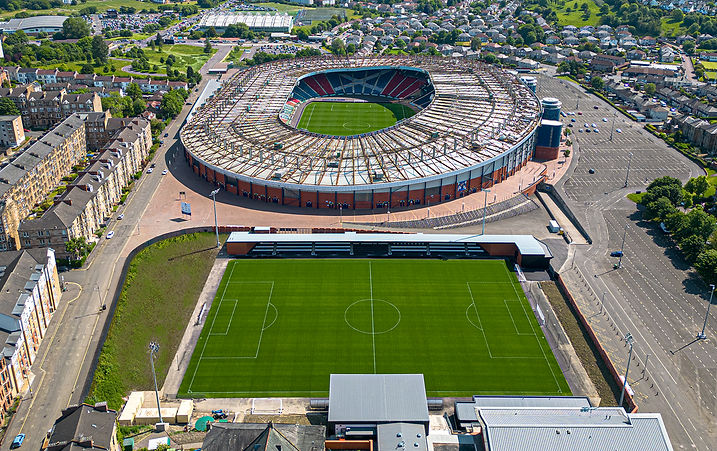
20 The city Stadium: The Home of Queen's Park Football Club
In 1903, Queen's Park Football Club moved to 3rd Hampden, creating one of the world’s most iconic football stadiums.
Queen's Park purchased this ground in 1923 when they needed additional land for their reserve and youth teams. The convenient location was adjacent to the main 3rd Hampden stadium.
Their purchase was the remaining part of Clincart Farm, which was previously sold off to make way for the new public Park, Queen's Park, in 1857.
The new Lesser Hampden stadium was opened in 1925 and could hold 12,000 spectators
Through the decades, this was used extensively, including being requisitioned during World War 2, during periods of renovation of the 3rd Hampden Park and as a warm-up track for the 2014 Commonwealth Games.

Clincart Farm in the early 19th century. The site of Lesser Hampden and Hampden Park can be seen in the background.
The Clincart farm building was used as a pavilion and changing rooms until 2013, when they were closed due to safety concerns, and subsequently demolished.
In 2013, the J. B. McAlpine Pavilion was opened to honour the club's record goalscorer of 163 goals during a 473-game playing career.
Queen's Park played their senior football at 3rd Hampden until May 2020, when the Scottish Football Association purchased the national stadium.
Subsequently, Queen's Park laid out plans to build their new ground on the Lesser Hampden Site, and opened their new city Stadium on Saturday, 12th August 2023, with Queen's Park beating Arbroath 2-1.

The City Stadium and Hampden Park in 2023. The new buildings in the foreground now occupy the former site of Clincart Farm.

The city Stadium pitch and stands with Hampden Park in the background.
